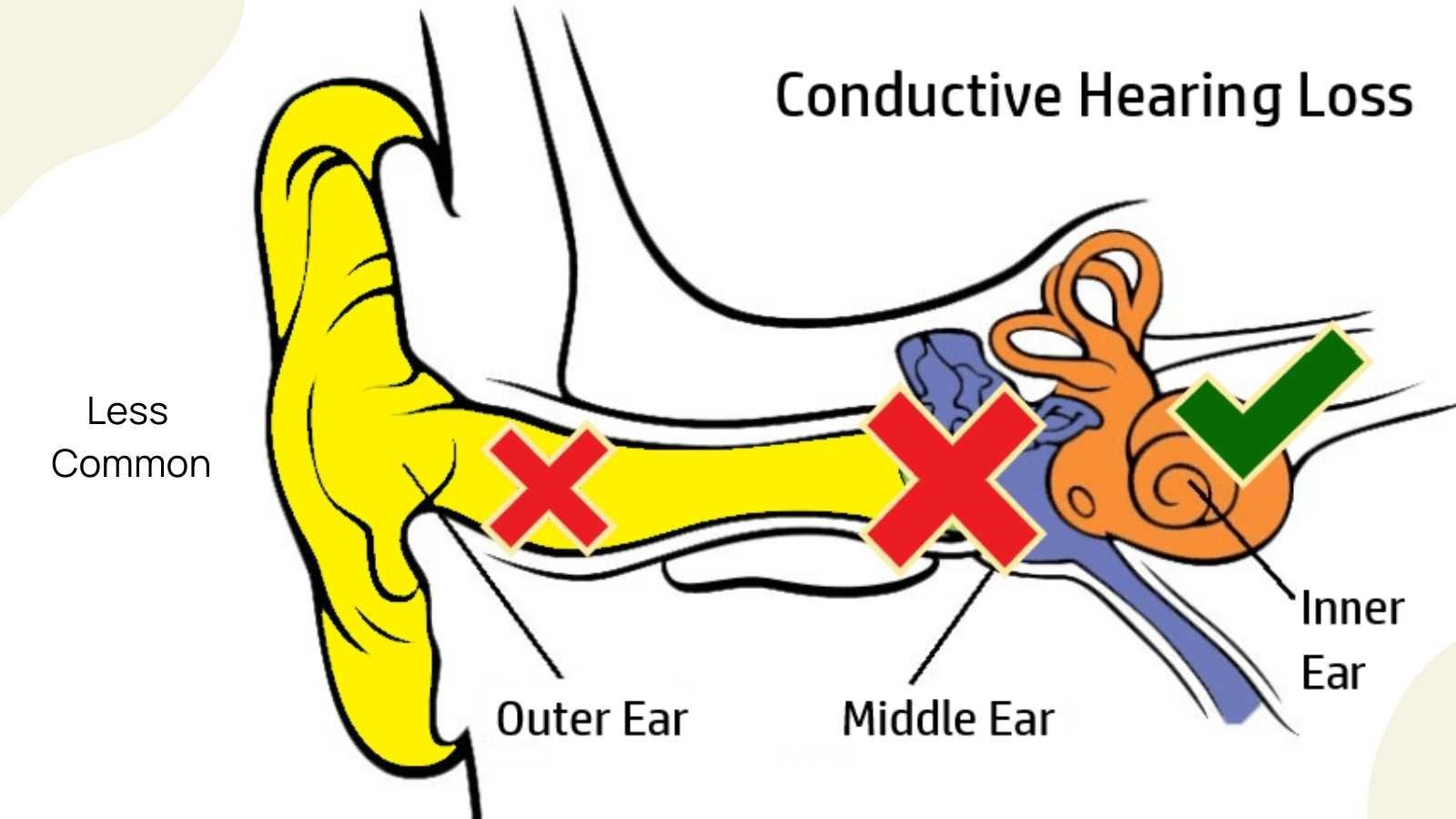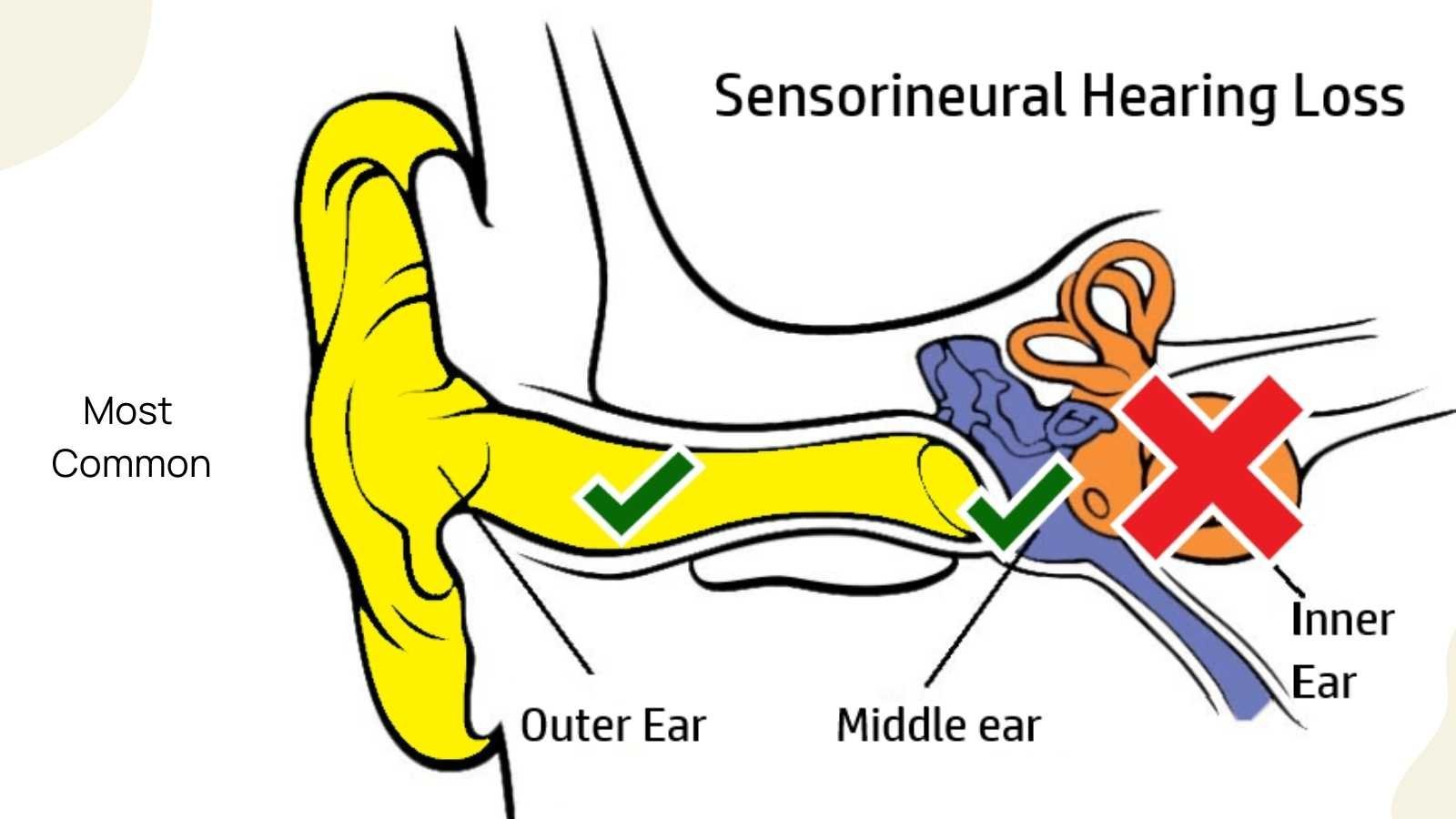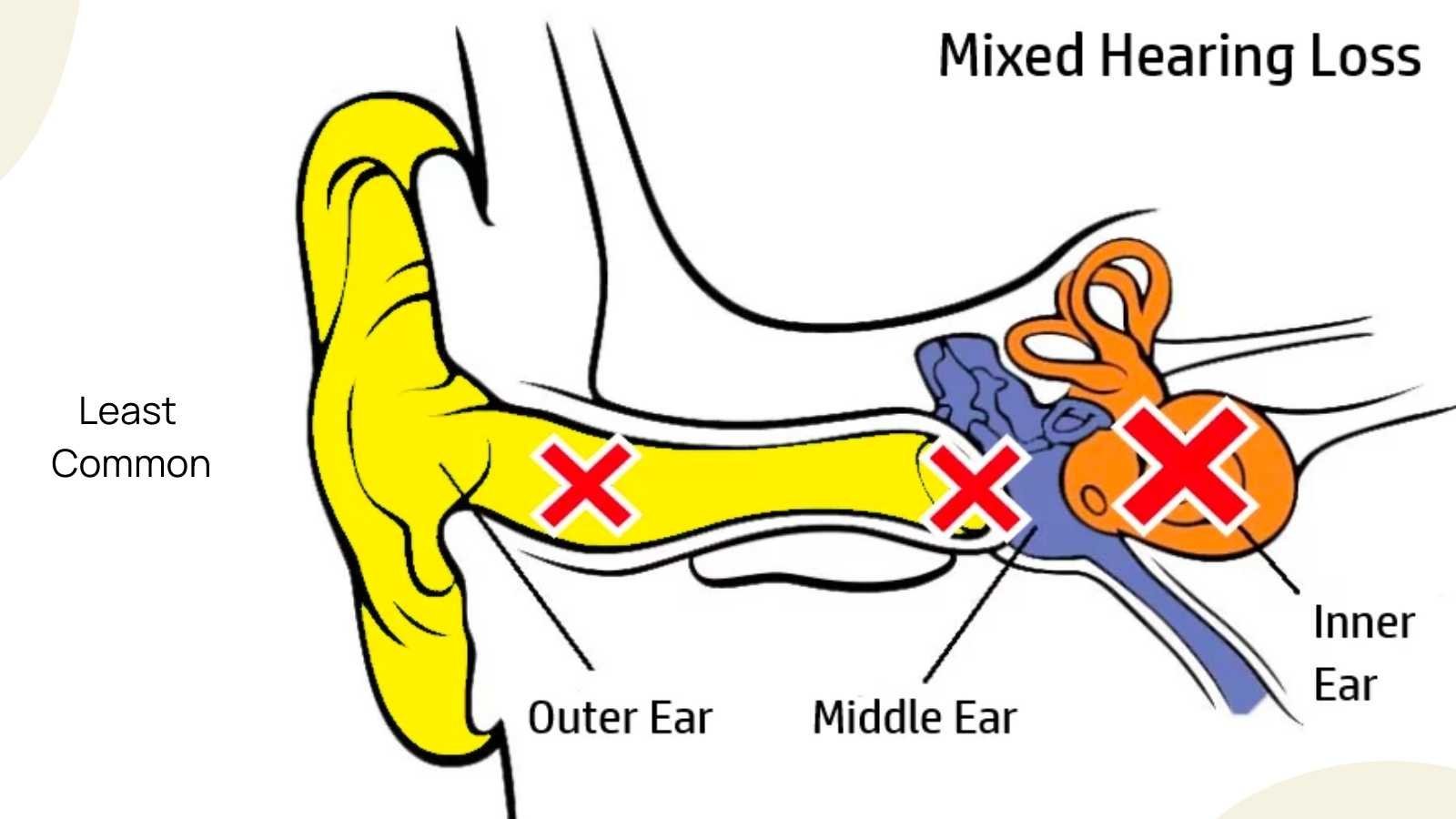Key Takeaways:
- Hearing loss can occur at different parts of the ear, leading to one of three types of hearing loss.
- Sensorineural is the most common type of hearing loss, which originates from the inner ear.
- Conductive hearing loss happens when there is blockage in the middle ear, eardrum, or ear canal.

As an audiologist, I have experience treating all types of hearing loss, including sensorineural, conductive, and mixed hearing loss. In my practice, I've found that patients truly appreciate understanding the nature of their hearing loss. Sometimes people assume hearing loss occurs in the same part of the ear for everyone. However, the truth is that hearing loss can occur in any number of places along the auditory pathway. Whether it's an issue with the outer, middle, or inner ear, identifying the specific type of hearing loss can help determine the best course of treatment. In this article, we will discuss the different types of hearing loss and which part of the ear is affected.
Prefer to watch?
Here's a quick video describing each hearing loss type with.
Hearing Loss Type #1 - Conductive Hearing Loss

Conductive hearing loss refers to a hearing problem caused by physical damage or the presence of obstruction along the outer ear and/or middle ear.
With this type of hearing loss, the hearing receptors, called hair cells, are intact and normal. The reason for the hearing loss is inefficient transmission of sound, from the environment, due to a physical problem. You can simulate this by simply putting your fingers in your ears.
A true conductive hearing loss can usually be remedied medically or surgically, depending on the case. In cases wherein the medical doctor cannot fully address the hearing loss, hearing aids may be recommended. The most common causes of conductive hearing loss are:
- ear wax impaction
- fluid in the middle part of the ear
- physical damage to the eardrum
Hearing Loss Type #2 - Sensorineural Hearing Loss

Sensorineural hearing loss is the most common type of hearing loss and is caused by the deterioration of our hearing receptors (the hair cells) found in the inner ear.
Unlike conductive hearing loss, there are no physical damages or obstructions on the external ear or middle ear; rather, the problem lies in the hearing receptors themselves. There are different causes of sensorineural hearing loss.
The most common causes of sensorineural hearing loss is wear-and-tear of our sense of hearing through external noise. Our ears, unlike our eyes, can never be shut off.
They constantly pick up sounds around us. You can think of the hearing portion of the inner ear as a set of guitar strings. The sound vibrations that reach the inner ear cause those strings to be strummed all the time. Over time, those strings may break, leading to an inability to hear the notes they should play.
The natural wear-and-tear of our hearing receptors make sensorineural hearing loss very common, especially in older populations.
In some cases, sensorineural hearing losses can be a byproduct of a viral illness, which causes some virus particles to reach the inner ear, introducing damage to the nerves. In still other cases, sensorineural hearing loss may be hereditary.
This type of hearing loss cannot be addressed medically/surgically. The most common treatment is the usage of hearing aids.
Important note on sudden hearing loss: sudden hearing losses can occur in some individuals and require immediate medical attention. You can wake up one day and notice that you just do not hear from one side, or you can be walking into the mall and suddenly lose your hearing. Should these happen, it is crucial to consult a physician right away to preserve long term hearing health.
Hearing Loss Type #3 - Mixed Hearing Loss

Combining both conductive and sensorineural hearing loss leads to the third type, mixed hearing loss.
In this type, there is an element of physical damage/obstruction to the outer and/or middle ear, in combination with a deterioration of the hair cells found in the inner ear.
A physician can treat the conductive part of the hearing loss and may prescribe hearing aids once the obstruction is clear.
Final Thoughts
If you are experiencing new sudden hearing loss or aren't sure what to do next we suggest that you seek out a medical professional. You can use the Find Care portal of this site to find a well-reviewed professional near your home. You can also take our free online hearing test here.
If you have questions, you can email our team at any time [email protected].

.jpg)




